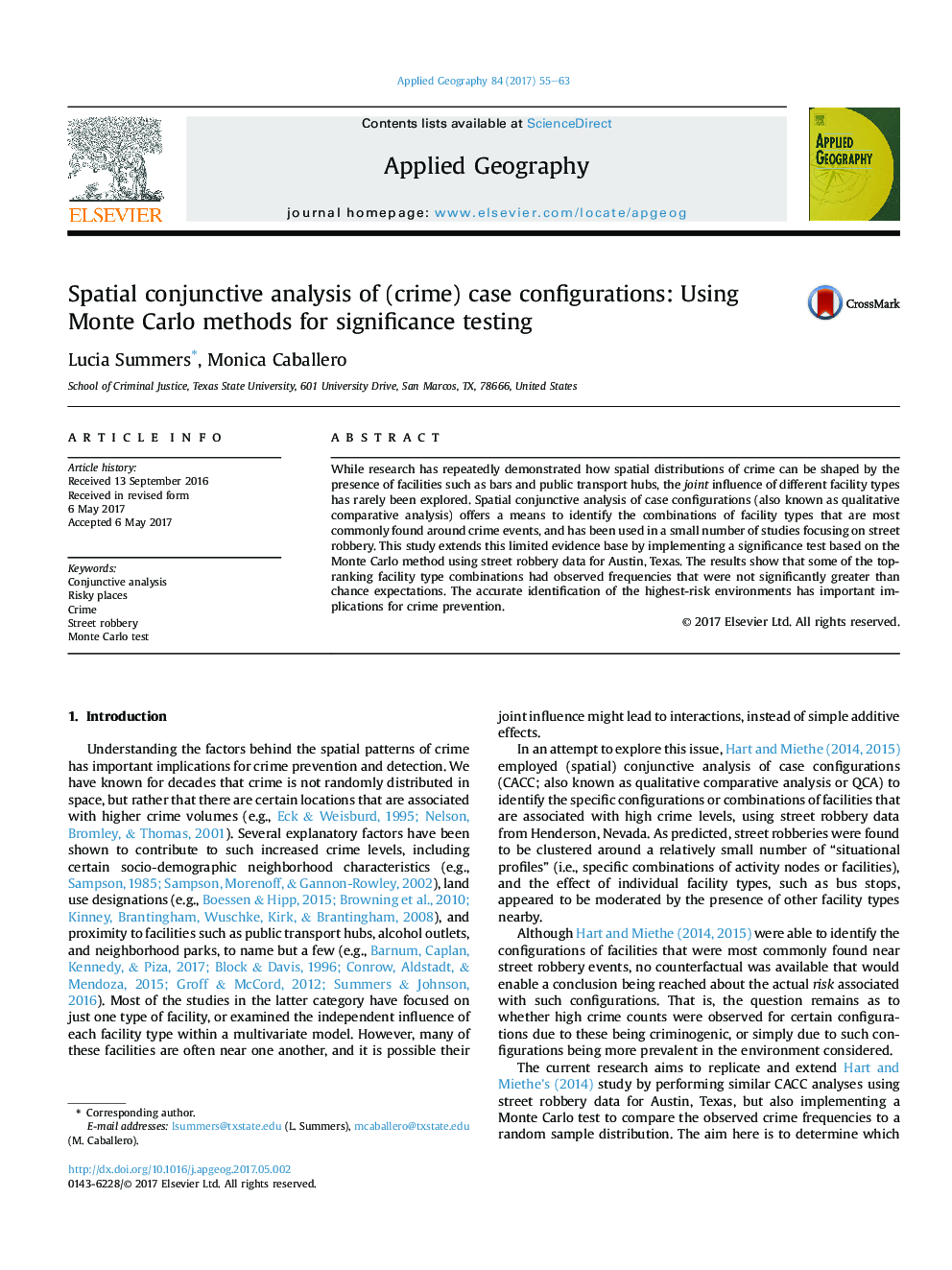| Article ID | Journal | Published Year | Pages | File Type |
|---|---|---|---|---|
| 4759026 | Applied Geography | 2017 | 9 Pages |
Abstract
While research has repeatedly demonstrated how spatial distributions of crime can be shaped by the presence of facilities such as bars and public transport hubs, the joint influence of different facility types has rarely been explored. Spatial conjunctive analysis of case configurations (also known as qualitative comparative analysis) offers a means to identify the combinations of facility types that are most commonly found around crime events, and has been used in a small number of studies focusing on street robbery. This study extends this limited evidence base by implementing a significance test based on the Monte Carlo method using street robbery data for Austin, Texas. The results show that some of the top-ranking facility type combinations had observed frequencies that were not significantly greater than chance expectations. The accurate identification of the highest-risk environments has important implications for crime prevention.
Keywords
Related Topics
Life Sciences
Agricultural and Biological Sciences
Forestry
Authors
Lucia Summers, Monica Caballero,
